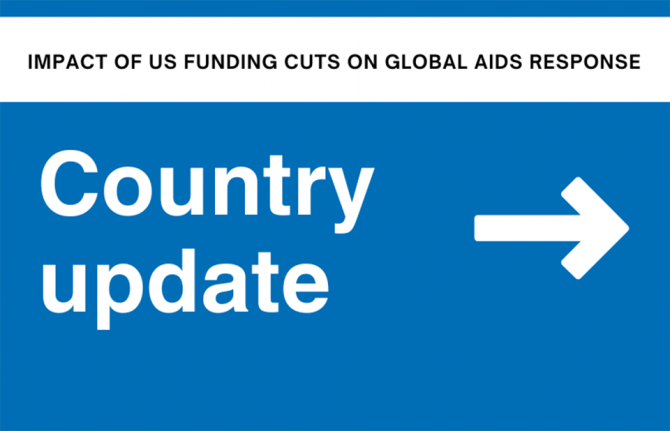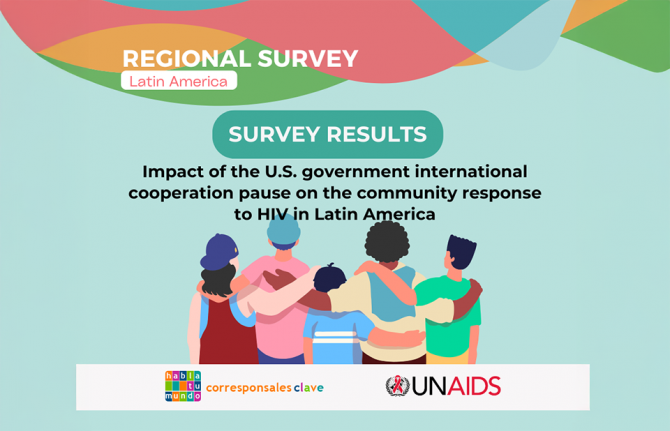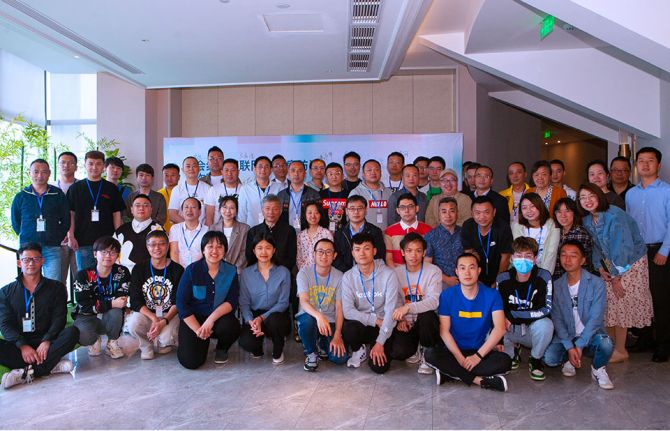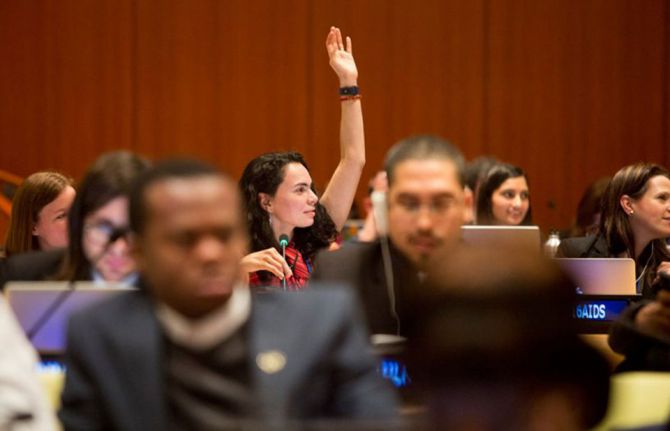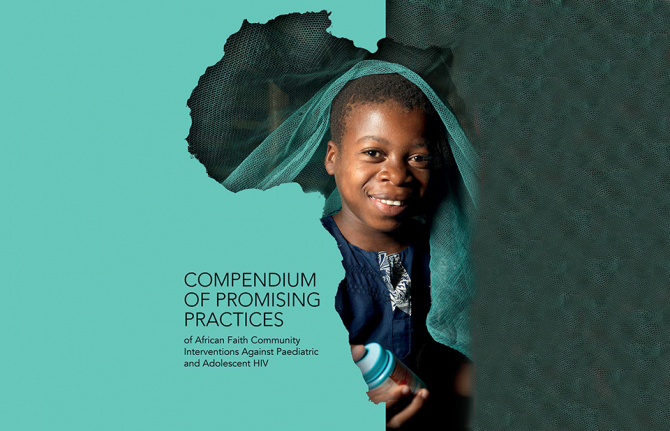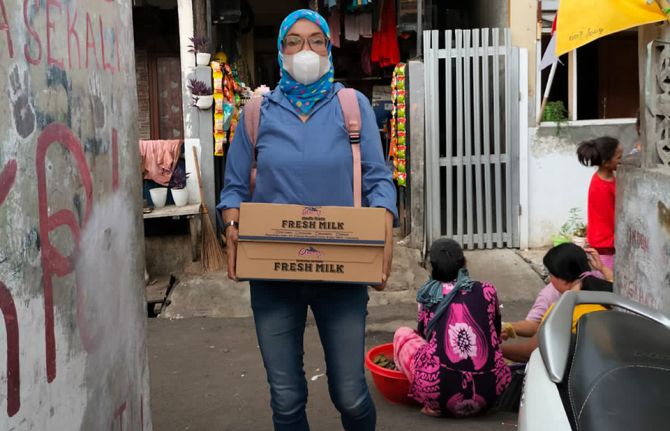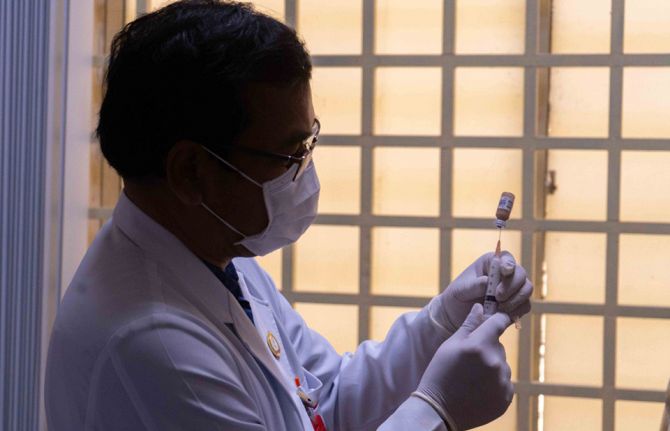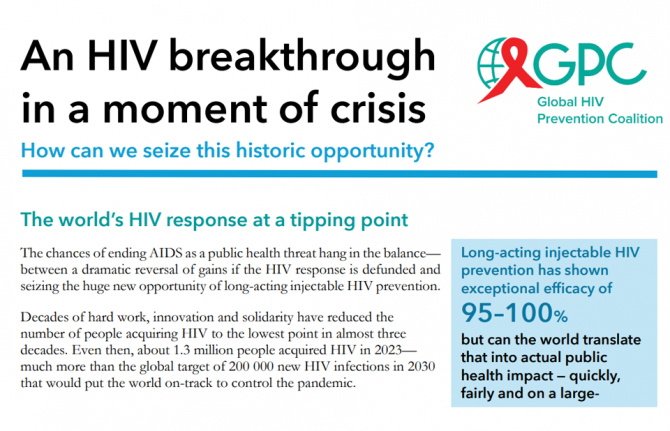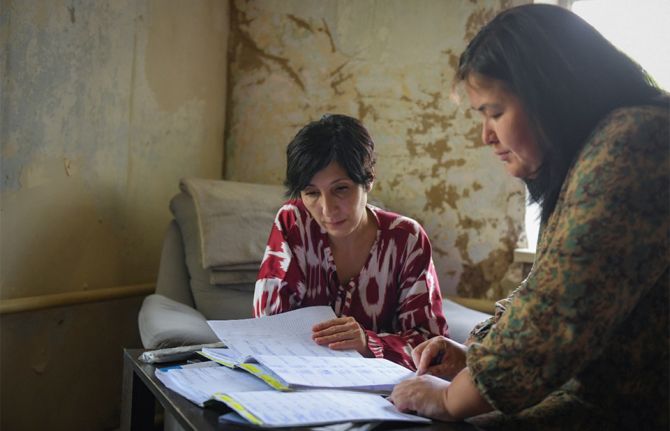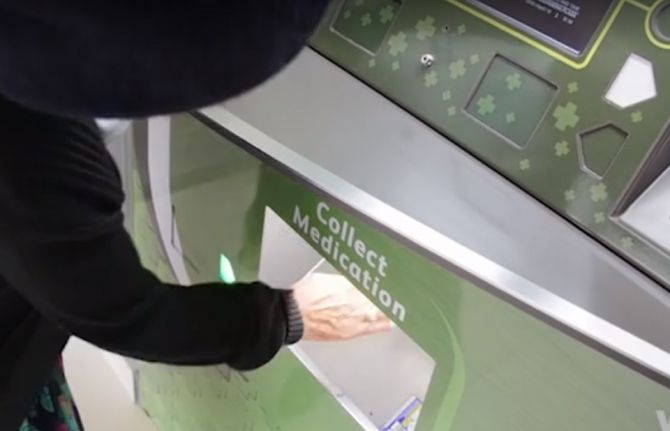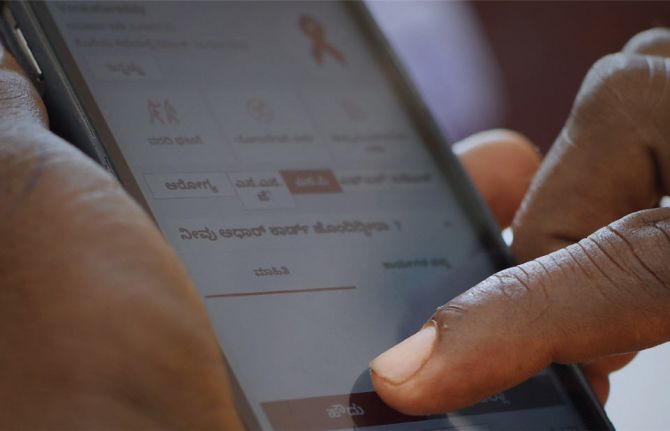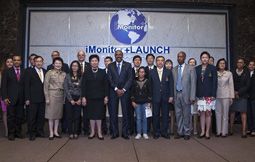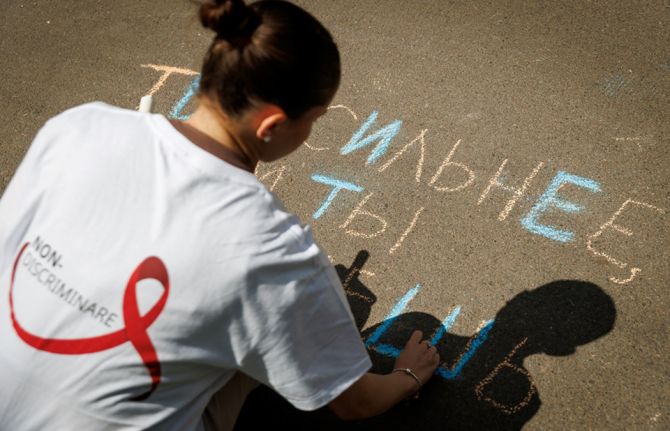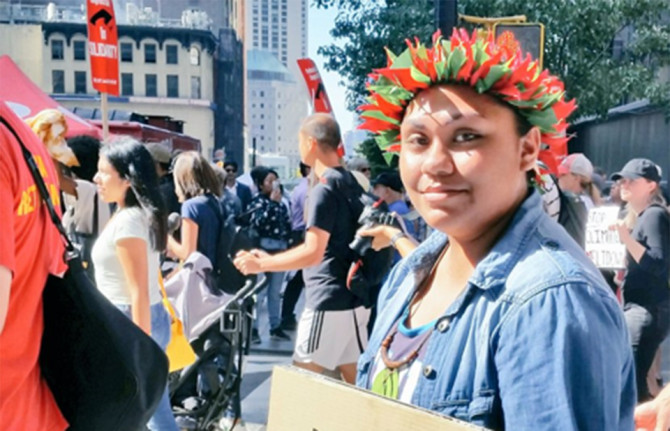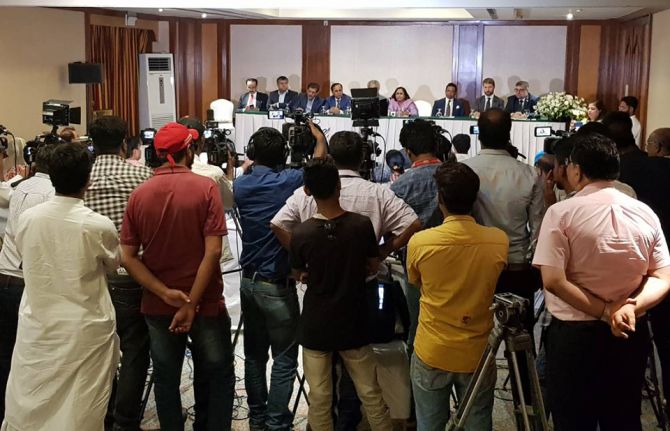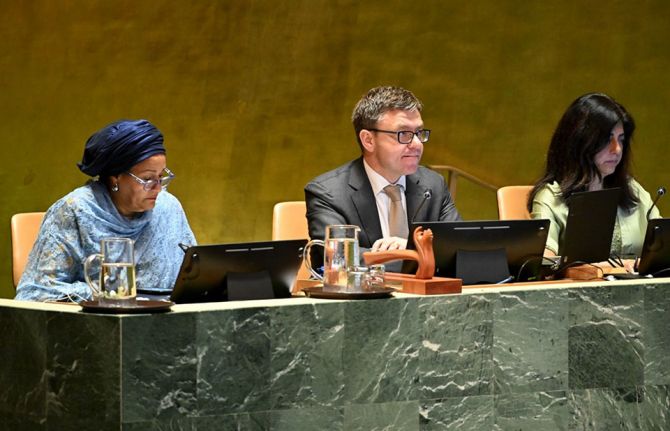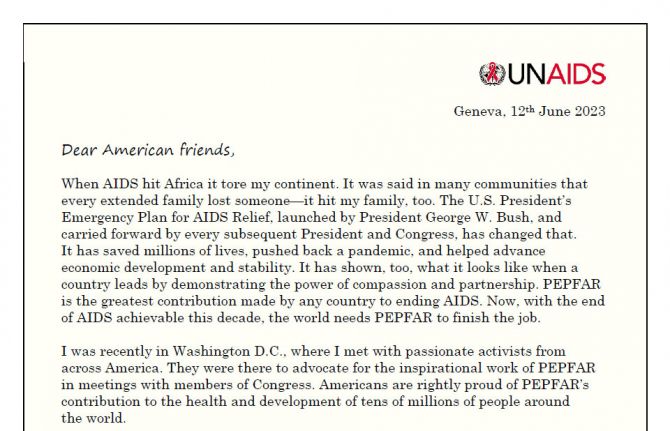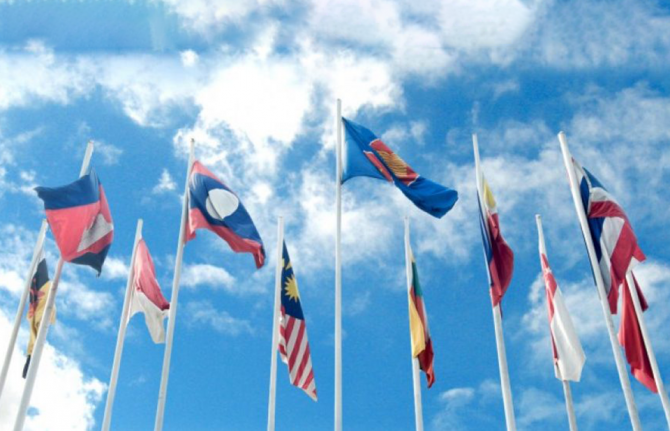
Feature Story
Business coalitions from Latin America and the Caribbean gather in Brazil
13 October 2008
13 October 2008 13 October 2008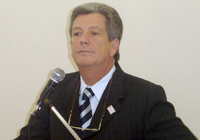
Dr Murilo Moreira, President CEN AIDS Brazil addresses the First regional Workshop of Business Coalitions from Latin America and the Caribbean Credit: UNAIDS
São Paulo - Business Coalitions on AIDS have emerged as an effective platform for the private sector response to the epidemic. AIDS has already claimed the lives of 25 million in the global workforce and remains a serious threat to business. Although some companies are already effectively addressing AIDS in the workplace, others simply do not know how or where to start mitigating risks. Business Coalitions have emerged to fill this gap and provide the private sector with the tools and processes it needs to effectively address AIDS in the workplace and in their surrounding communities.
Emergence of Business Coalitions on AIDS
Business Coalitions also act as a voice for the private sector, often through representation on national AIDS committees and by interacting with other key stakeholders. Coalitions have formed partnerships with international donors, civil society groups, governments, other regional and national Business Coalitions. These relationships are critical in delivering a coordinated response to the epidemic.
UNAIDS has supported the development of a number of national business coalitions on HIV in regions heavily impacted by the epidemic. UNAIDS is currently working with over 30 national business coalitions, helping to support the private sector response to AIDS.
First regional Workshop of Business Coalitions from Latin America and the Caribbean

Brazilian Business Council on HIV-AIDS Prevention (CEN)
On October 6 and 7 2008, UNAIDS and the Brazilian Business Council on HIV-AIDS Prevention (CEN) convened a regional workshop of business coalitions and initiatives from Latin America and the Caribbean in Sao Paulo to recognize the critical role that the private sector play in the response to HIV, exchange experiences and discuss challenges and opportunities.
The workshop was attended by coalitions from Barbados, Belize, Brazil, Guatemala, Guyana, Jamaica, Mexico, and Suriname as well as the Trade Union Confederation of the Americas, the Barbados Workers Union, the Brazilian national AIDS Program, several companies members of the CEN, a state company from Paraguay, the national council of private companies from Panama and Venezuela, Futures Group, Impulso - a network of Mexican NGOs working on AIDS, the Pan-Caribbean Partnership Against HIV/AIDS (PANCAP), and the ILO.
Participants discussed best practices, issues of funding, brainstormed on how to improve the coordination with labour unions and on how to optimize the integration of the private sector and workplace into national AIDS plans as well as the development of national HIV anti-discrimination workplace regulations.
“Too often we see companies developing lovely policies but falling down on the implementation side. You need to work on behaviour change education to leave something significant and sustainable behind,” noted Madhuri Supersad, HIV/AIDS technical adviser for ILO in the Caribbean region.
The workshop provided a forum for stakeholders working with business coalitions such as the ILO to reiterate the importance of the tripartite mechanism involving workers, employers and governments as well as to present the current process undertaken by the ILO leading towards a global standard on HIV/AIDS in the workplace in 2010.
Civil society was represented by a Mexican NGO and participants felt that much more needed to happen in many countries to build partnerships between the private sector and civil society to mutually benefit one another.
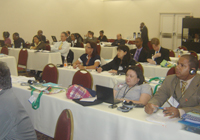
Participants at First regional Workshop of Business Coalitions from Latin America and the Caribbean Credit: UNAIDS
It was decided to revitalize some Latin American coalitions especially in the Mercosur region, or improve the visibility and impact of the existing ones - having in mind that there can not be a “one size fits all” approach in the region. These efforts could lead to the establishment of a Pan Latin America business coalition in the near future. The upcoming regional AIDS conference in Peru next April 2009 could be a great platform to launch such an initiative.
Participants committed to continue the dialogue started during this workshop by exchanging materials and activities and seeking advice from each other on specific topics.
The workshop was followed by the 10th anniversary celebrations of the CEN an anniversary which is a landmark for the private sector response not only in Brazil but for whole Latin America.
For further information, please contact UNAIDS focal points:
Marie Engel
Partnerships Adviser Private Sector Partnerships UNAIDS
Tel: +41 22 791 554
Email : engelm@unaids.org
In the Caribbean region: Dawn Foderingham, Tel. +1 868 623 7056 x 278,
email foderinghamd@unaids.org
In the Latin American region: Rosemeire Munhoz, Tel. +507 302 4509,
email munhozr@unaids.org
In Brazil: Naiara Garcia da Costa Chaves, Tel. +55 61 3038 9222,
email costan@unaids.org
Business coalitions from Latin America and the Ca
Feature stories:
International labour standard would strengthen the HIV response in the workplace
The Life Initiative – Hotels addressing AIDS (23 July 2008)
Standard Chartered Bank world leader in workplace HIV education (05 June 2008)
ILO sees significant improvement in workplace attitudes to HIV (25 April 2008)
Contact:
UNAIDS focal point:
Marie Engel
Partnerships Adviser Private Sector Partnerships UNAIDS
Tel: +41 22 791 554
Email : engelm@unaids.org
In Caribbean region:
Dawn Foderingham, Tel. +1 868 623 7056 x 278,
Email foderinghamd@unaids.org
In Latin American region:
Rosemeire Munhoz, Tel. +507 302 4509, Email munhozr@unaids.org
In Brazil:
Naiara Garcia da Costa Chaves,
Tel. +55 61 3038 9222, Email costan@unaids.org
Publications:
Saving lives, protecting jobs. ILO/SHARE Report April 2008 (3.7 Mb, pdf) ( fr )
UNAIDS Guidelines for working in partnership with the Private Sector
UNAIDS & Business: Working Together
Partnerships with the Private Sector: A Collection of Case Studies from UNAIDS
Business Coalitions Tackling AIDS: A Worldwide Review
CEN/AIDS 10 years of private sector mobilization in Brazil ( en | es | pt )

Feature Story
UN Secretary-General convenes pharmaceutical companies in New York
10 October 2008
10 October 2008 10 October 2008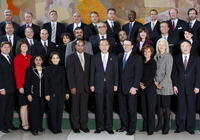
United Nations Secretary-General together with senior officials from the United Nations system met with seventeen of the world’s research-based and generic pharmaceutical and diagnostic companies
On 9 October 2008, the United Nations Secretary-General together with senior officials from the United Nations system met with seventeen of the world’s research-based and generic pharmaceutical and diagnostic companies to review progress on strengthening efforts to expand access to HIV services in low- and middle-income countries.
This meeting was a follow-up to the last high-level dialogue between the UN and pharmaceutical and diagnostic companies in July 2006.
UNAIDS Executive Director Dr Peter Piot also participated in the event. During his wider remarks, he highlighted the achievements of the United Nations and the international community in their efforts to scale up access to HIV prevention, treatment, care and support.
The meeting took place immediately after the high level gathering on the Millennium Development Goals where Member States agreed to increase funding for research and development of essential drugs to treat AIDS and other diseases.
Although there has been an increase in the number of people receiving antiretroviral treatment in low-and-middle incomes (3 million people were on treatment by the end of 2007, up from 1.3 million in 2006), only one-third of those who need antiretroviral treatment in low-and middle-income countries are receiving it.
In recent years, there have been a number of achievements in relation to HIV treatment such as the development of fixed-dose combinations for first-line treatment, including pediatric formulations, price reductions for first-line and pediatric antiretrovirals as well as further investment and development of technologies for prevention and diagnosis of HIV and monitoring the efficacy of antiretroviral therapy in both adults and children.
The Secretary-General highlighted the need for greater collaboration between the private sector and the UN to expand existing efforts in the spirit of Goal 8 of the MDGs on building a global partnership for development. He noted that progress on all fronts is essential in order to reverse the AIDS epidemic.
Participants agreed to continue to hold periodic high-level meetings, under the leadership of UNAIDS, to take stock of progress and to identify new collaborative measures.
UN Secretary-General convenes pharmaceutical comp
Cosponsors:
Press centre:
Read statement by United Nations Secretary-General (New York, 9 October 2008)
Related

Feature Story
4th Global Partners Forum on Children Affected by HIV and AIDS
08 October 2008
08 October 2008 08 October 2008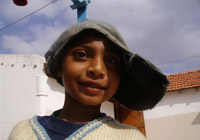
200 delegates from 42 countries met in Dublin, Ireland on the 6th and 7th October 2008 for the 4th Global Partners Forum on Children affected by HIV and AIDS.
Credit: UNAIDS
In order to review progress, set global priorities, and make commitments for children affected by HIV, 200 delegates from 42 countries including leaders in government, civil society and UN agencies met in Dublin, Ireland on the 6th and 7th October 2008 for the 4th Global Partners Forum on Children affected by HIV and AIDS.
The Global Partners Forum was established in 2003 to build momentum in fulfilling global commitments for children affected by HIV as was stated in the United Nations General Assembly 2001 Declaration of Commitment on HIV/AIDS and the Millennium Development Goals.
The current definition of children affected by HIV (UNICEF and UNAIDS) are those under 18 years of age who are living with HIV or have lost one or both parents due to AIDS or whose survival, well-being or development is threatened or altered by HIV. However, in hyperendemic countries where HIV prevalence exceeds 15% most children are directly or indirectly affected by AIDS.
According to the latest UNAIDS report on the global AIDS epidemic, the number of children living with HIV has increased from 1.6 million in 2001 to 2 million in 2007, 90% of which live in sub-Saharan Africa where nearly 12 million children under 18 have lost one or both parents to AIDS.
The 4th Global Partners Forum, co-hosted by the Government of Ireland, UNICEF and UNAIDS, aimed to renew the commitment of international partners to accelerate support for the protection and care of children affected by HIV, report progress and highlight good practices identified since the 3rd Global Partners Forum in 2006, as well as to produce a participant-endorsed communiqué defining priorities for the next two years.
The meeting was opened by the Minister of State for Overseas Development, Peter Power, T.D. and a keynote address was given by An Taoiseach Brian Cowen, the Prime Minister. Other keynote speakers included the First Lady of Honduras Xiomara Castro de Xelaya, and HIV activist and singer/songwriter Annie Lennox. The meeting differed from many others by the presence and active contribution of children from western and eastern Europe, Asia, Africa, and Latin America, including some infected and affected by HIV.

Despite efforts to care and protect vulnerable children, exclusion, stigma, and discrimination of children affected by HIV continue to be common challenges in most countries.
Credits: UNAIDS
Children’s vulnerability to the epidemic was captured in the evidence-based synthesis paper presented at the forum by UNICEF to promote awareness and to inform the discussions. Priority issues were further elaborated during panel discussions addressing topics such as family-centered care, strengthening national responses for the most vulnerable children, and quality programming at the community level. Although it was acknowledged that there has been progress in global efforts for children affected by HIV, it was also recognized the severe remaining constraints which make it impossible for some children to realize their human rights.
Evidence from the synthesis paper and discussions at the forum, including contributions from the children, highlighted that despite efforts to care and protect vulnerable children, exclusion, stigma, and discrimination of children affected by HIV continue to be common challenges in most countries. Stigma has been cited as a reason for children not being enrolled in school, receiving care, or being adequately served by programmatic responses.
Attending school is essential to the development of skills and acquisition of knowledge to enable young people to reach economic and social fulfillment. Schools also have the protective effect of educating children about HIV and how to avoid infection. However, HIV poses several constraints that prevent children from going to school or forces them to an early drop out. For instances, many children become responsible for the care of their siblings and other family members when parents are debilitated by poor health. The need to provide food or generate income prevents these children from attending school while at the same time increasing their vulnerability to HIV. This vulnerability represents part of a vicious cycle: their circumstances put them at high risk for exploitation and abuse, and therefore exposure to HIV.
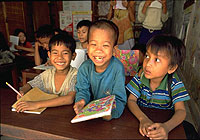
Schools also have the protective effect of educating children about HIV and how to avoid infection. Credit: UNAIDS
Evidence presented at the 4th Global Partners Forum showed that families are bearing the bulk of the costs for infected children. Therefore, families under stress through chronic poverty, labor constrains and facing the impact of illness and death, need external assistance. In response to these challenges, a number of countries are beginning to scale up cash transfers, as part of a social protection package, to alleviate poverty and to increase access to essential services. Such social protection has been shown to be feasible even in resource-constrained countries with high HIV burdens.
Even though the main mode of HIV transmission, and the extent of HIV-related vulnerability among children may differ from region to region, the response challenges were seen to be the same, such as fear of HIV testing by parents, lack of access to treatment for children, and lack of social and psychological support.
The messages of the meeting and the action points were summarized by a communiqué which was presented, debated and adopted during the plenary. It recognized that more information and data were now available and the reality on the ground is better understood to inform action. Based on the evidence presented, the communiqué highlighted four priority action points: the well-being of children and parents infected by HIV; strengthening families and communities as units of prevention, treatment, care and support; increasing effectiveness of programs, services and resources; and human rights for vulnerable children.
Participants committed themselves to implementing the action points of the communiqué, to monitor their progress, and to hold themselves accountable to children affected by HIV. UNAIDS committed to work with governments, the UN family and civil society to put children and families at the heart of the response to HIV through efforts at global, regional and country level.
4th Global Partners Forum on Children Affected by
Cosponsors:
Partners:
Unite For Children. Unite Against AIDS
Press centre:
Speech by Paul De Lay, UNAIDS Director, Epidemic Monitoring and Prevention Department - 4th Global Partners Forum on Children affected by HIV (pdf, 42 kb)
Read final communique (pdf, 53 kb)
Publications:
2008 report on the global AIDS epidemic
Children and AIDS - Second Stocktaking report (pdf, 2.5 Mb)

Feature Story
HIV prevention and the uniformed services in CIS
08 October 2008
08 October 2008 08 October 2008
Fifth International Conference on HIV/AIDS Prevention in Armed Forces was held in September 2008, St. Petersburg, Russia
Studies show that rates of sexually transmitted infections among armed forces are generally higher than in civilian populations. Among male population groups, military and police report the highest risk behaviour, such as engaging in sex without using a condom, and highest number of partners.
The good news is that prevention programmes to reduce transmission of sexually transmitted diseases including HIV can be implemented within structured institutions like the military. Existing facilities can be used for testing and counselling, prevention, care and support services. Provision of education and condoms can slow the spread of HIV and as young recruits have strong influence among their peers, within and outside the service, they can transmit clear messages to the surrounding community, thus, changing perceptions and behaviours that can positively impact the larger population.
The UN Security Council made history in January 2000 when for the first time it debated a health issue—AIDS. By subsequently adopting Resolution 1308 (2000), it highlighted the possible growing impact of AIDS on social instability and emergency situations and potential damaging impact of HIV on the health of international peacekeeping personnel. The UN Declaration of Commitment on HIV/AIDS adopted by Member States in the General Assembly Special Session (June 2001) also includes national uniformed services as a key area to be addressed in the global action against the spread of the HIV epidemic.
In addition to the growing engagement of Member States, leading regional bodies are increasingly acknowledging the need to integrate AIDS education into the operations of uniformed services.
Fifth International Conference on HIV/AIDS Prevention in Armed Forces
It is against this context that the “Fifth International Conference on HIV/AIDS Prevention in Armed Forces” was held in September 2008 in St. Petersburg, Russia. The event brought together a broad coalition of participants including politicians, military health service providers, scientists from the Russian healthcare system, epidemiologists and communicable disease specialists engaged in HIV prevention as well as diagnostic and treatment issues. Representatives from governmental bodies, NGOs, and international organisations also took part.
Dr Sergei Furgal, Director, a.i., RST/Eastern Europe and Central Asia, noted the significance of the gathering which distinguished it from previous military conferences in the region: “National delegations represented the armed forces of all nine CIS countries and participants discussed a wide range of programmatic issues.”
“Within the framework of the CIS Regional Network on Military and AIDS it was decided to shape a coordination mechanism for information and experiences exchange with a clear indication of UNAIDS’ role in this process,” he continued.
More than 500 participants gathered to discuss issues related to lowering the prevalence of HIV infection amongst servicemen and servicewomen in the region. Participants attended from the Commonwealth of Independent States (CIS) countries (Armenia, Belarus, Kazakhstan, Kyrgyzstan, Moldova, Russian Federation, Tajikistan, Turkmenistan and Ukraine).
There were several specific and significant outcomes from the meeting. Participants agreed on the need to improve coordination between military medical service departments in order to lower HIV prevalence amongst military personnel. They also plan to expand cooperation with international, governmental and non-governmental organizations to work together to promote HIV prevention in the armed forces. They will consider establishing a coordination method to exchange information and experiences amongst organizations working to curb HIV prevalence in the armed forces of conference participant countries. UNAIDS and the Centre for Social Development and Information have offered to provide support to establish this coordination method.
Other initiatives under consideration include expanding programmes of educational activities for different ranks of servicemen and servicewomen, creating a web site to share HIV information among participant countries’ armed forces, and inviting representatives from other country’s uniformed services agencies to take part in conferences.
The Sixth International Conference on HIV/AIDS Prevention in Armed Forces will take place in 2009 in the Russian Military Medical Academy, St. Petersburg, Russia.
HIV prevention and the uniformed services in CIS
Publications:
United Nations Security Council Resolution 1308
On the front line: A review of policies and programmes to address AIDS among peacekeepers and uniformed services (pdf, 890 kb)
Guidelines for HIV/AIDS interventions in emergency settings ( fr | es | ru )
Trainer's Guide (1st Edition): IASC Workshop on HIV/AIDS Interventions in Emergency Settings ( fr | es | ru )
Report of the UNAIDS Expert Panel on HIV Testing in United Nations Peacekeeping Operations
Related

Feature Story
You don’t have to be in power to be a leader
06 October 2008
06 October 2008 06 October 2008
“Portraits of Commitment” is a stunning and
thought-provoking book of photographic
portraits which was launched in 2007 by
the Asia Pacific leadership Forum on
HIV/AIDS and Development (APLF).
Credits: UNAIDS
“Portraits of Commitment” is a stunning and thought-provoking book of photographic portraits which was launched in 2007 by the Asia Pacific leadership Forum on HIV/AIDS and Development (APLF). The book features people from all walks of life in South Asia who, for a range of different reasons, are working to raise awareness among their communities about HIV.
For some, their commitment to the AIDS response stems from personal motivation such as Dr Michael Abeyaratne whose wife became infected with HIV through a blood transfusion, Laxmi Narayan Tripathi whose best friend died in her arms, or Yusif Hamid, a scientist developing affordable medication. Others were already in the public eye and decided to use their popularity or political clout to campaign for acceptance and treatment.
Rising above discrimination
The portraits, taken by the celebrated Bangladeshi photographer Shahidul Alam are accompanied by poignant interviews. Most recount experience of stigma in communities where even local politicians often don’t know how HIV is transmitted. Several of those featured have emerged as leaders. Those who would never in their past have seen themselves in such a role, now recognize that they are in a unique position to share and respond to the needs of their communities.
It is striking, among the all-too-common stories of women facing discrimination, to hear one of those profiled Jahnabi Goswami say that her family and neighbours surrounded her with love and support and encouraged her to use her positive status to inform other wives about HIV.
Social responsibility

India Cricket Captain Rahul Dravid has
recorded TV and radio messages that raise
AIDS awareness in remote villages across
India. Credits: UNAIDS/ Shahidul Alam
Religious and spiritual leaders are also celebrated, united by common concern about illness, ignorance, discrimination and the future of their countries.
“If an individual is sick, we can leave it to his or her family to take care of it. But when there’s an epidemic, the government and society must act,” says one of the most celebrated modern mystics, Sadhguru Jaggi Vasudev.
Shalina Bharat is the dean of the School of Health Studies in Mumbai, India. She has pioneered social research in the field of impact of HIV on society. “I know what it means when rights are discriminated or violated; I have seen how it affects people.”
Power of love
The power of love between individuals is another theme running through this book as with the husband and wife Rubina and Asim. Rubina is an HIV-negative wife married to an HIV-positive husband. “I wanted to prove to the world that marrying an HIV positive person is normal,” she says. View photo gallery “South Asia: Portraits of Commitment.”
You don’t have to be in power to be a leader

Feature Story
New tool to improve coordination of AIDS technical support
03 October 2008
03 October 2008 03 October 2008
In order to further improve the coordination
of technical support provided to countries,
UNAIDS and its partners have developed a
new tool in the form of a shared database.
Photo credit: UNAIDS/P.Virot
Many countries require quality and timely technical support to plan, budget, implement and monitor their AIDS programmes effectively and efficiently. While the demand for technical support has increased, the number of providers has also grown dramatically resulting at times in competition, duplication and increased transaction costs for countries using these services.
In order to further improve the coordination of technical support provided to countries, UNAIDS and its partners have developed a new tool in the form of a shared database. This database includes up-to-date information on technical support. So technical support providers and users will be able to know what kind of expertise has been provided to a specific country, by whom and with what results, thus optimizing resources and achieving greater coordination in providing technical support to national AIDS efforts.
The CoATS – Coordinating AIDS Technical Support database – a practical tool for countries to monitor technical support aims to:
- Facilitate access by country partners to timely and quality assured technical support.
- Encourage coordination of technical support between providers and users with increased accountability for results.
- Facilitate collaboration and exchange of information on technical support activities at global, regional and country level
CoATS has been established as a web-portal with data on technical support provided by a range of partners including UNAIDS and its Cosponsors UNDP, UNFPA, UNICEF, World Bank and WHO as well as, USAID/PEPFAR, the Global Fund, GTZ, CSAT, ICTC and the International AIDS Alliance. CoATS is currently being piloted at the country level and UNAIDS will support ten countries in using the CoATS system to monitor their technical support plans. Following a consolidation phase, CoATS will be rolled out more widely.
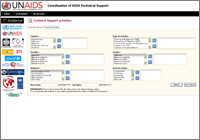
The data stored in the database can be
searched by country, provider, activity
type, recipient, funder, status and start
and end dates.
The data stored in the database can be searched by country, provider, activity type, recipient, funder, status and start and end dates. The resulting information can then be generated as reports based on searches and exported as PDF documents or as Excel spreadsheets. CoATS will also have a database of different tools and reports from technical support missions that will enable better sharing of information and reduce duplication of efforts.
CoATS has at its heart the Principles of Technical Support developed by the Global Implementation Support Team (GIST) whose mandate is to coordinate technical support to address implementation bottlenecks, disseminate lessons learnt and identify good practices.
“This is an important area of work for UNAIDS. CoATS facilitates greater accountability and country ownership of technical support by providing a clear picture of activities. The database will indicate who is asking for the support, who is paying for it, who is supplying it and who is the consultant carrying it out and when”, said Tim Martineau, UNAIDS Director for Technical and Operational Support Department. “UNAIDS is pleased to be an active member of the GIST and to improving the coordination of technical support”, he added.
New tool to improve coordination of AIDS technica
Tools:
CoATS – Coordinating AIDS Technical Support database
Publications:
Principles for technical support - 2008 (pdf, 300 Kb)
Terms of Reference of the Global Implementation Support Team - January 2008 (pdf, 14 Kb)
2008 Workplan of Global Implementation Support Team - 2008 (Excel, 21 Kb)
Related

Feature Story
Faces against HIV stigma and discrimination
01 October 2008
01 October 2008 01 October 2008
The aim of the campaign, also known as
the “faces” campaign, was to remove the
stigma associated with HIV by showing
pictures together with testimonies of
Ugandans who live positively with HIV.
Credits: UNAIDS/J.Ewen
HIV has often been associated with behaviours that may be considered socially or morally unacceptable by many people such as sex work, sex outside marriage or with multiple partners, sex between men and injecting drugs. This single fact, fueled by high levels of ignorance, denial, fear and intolerance, has widely stigmatized HIV infection.
In order to reverse the preconceptions about people living with HIV and at the same time raise awareness around different AIDS-related issues, UNAIDS in partnership with the Uganda Red Cross, developed a campaign entitled “The Truth is Not Written on Your Face”.
The aim of the campaign, also known as the “faces” campaign, was to remove the stigma associated with HIV by showing pictures together with testimonies of Ugandans who live positively with HIV. At the same time, the campaign highlighted that the HIV status of a person it is not shown on their face. As a result, it reinforced the need for effective and efficient prevention tools and behaviours, such as limiting the number of sexual partners and the consistent use of condoms, to prevent the transmission of HIV.
“Despite a long history with the epidemic, there is often still an assumption in Uganda that it is ‘someone else’ who has HIV, or there are strong moral undertones which suggest it must be sex workers, etc. who are affected by it”, said Malayah Harper, UNAIDS Country Coordinator. This has lead to complacency and much of the positive behaviour change from the 1990s is being eroded. “The ‘faces’ campaign proved these assumptions wrong while at the same time highlighting the importance of preventing HIV”, she added.

Experience teaches that a strong movement
of people living with HIV that affords mutual
support and a voice at local and national
levels is particularly effective in tackling
stigma. Credits: UNAIDS/J.Ewen
Stigma and discrimination are violations of human rights and undermine public health efforts to tackle the HIV epidemic. People living with HIV are frequently subject to discrimination. Many have been thrown out of jobs and homes, rejected by family and friends, and some have been killed because of their HIV status.
Together, stigma and discrimination constitute one of the greatest barriers to dealing effectively with the epidemic. They can discourage governments from acknowledging or taking timely action against AIDS. They can deter individuals from finding out about their HIV status and they inhibit those who know they are infected from sharing their diagnosis and from seeking treatment and care for themselves.
Experience teaches that a strong movement of people living with HIV that affords mutual support and a voice at local and national levels is particularly effective in tackling stigma.
Faces against HIV stigma and discrimination
Multimedia:
Feature stories:
HIV implementers gather in Kampala to share ideas, experiences in AIDS response
Partners:

Feature Story
Clinton Global Initiative
26 September 2008
26 September 2008 26 September 2008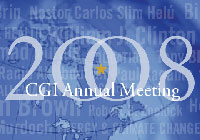
The Clinton Global Initiative (CGI) is a
non-partisan catalyst for action that brings
together a community of global leaders
from various backgrounds to devise and
implement innovative solutions to some
of the world’s most pressing challenges.
The annual meeting of the Clinton Global Initiative (CGI) concludes today in New York. The three-day event brought together a diverse group of world leaders from government, business, international agencies and civil society to examine global challenges and transform that awareness into action.
UNAIDS Executive Director Dr Peter Piot and former President of the Portuguese Republic, Jorge Sampaio participated in a working group breakfast on global health which addressed AIDS, tuberculosis, and malaria.
Increased effort and investment in the AIDS response in recent years have yielded examples of successful approaches that can be replicated or scaled up globally. The participants identified and explored opportunities to improve the way we respond to these diseases with existing tools and knowledge and highlighted current challenges.
Since its inception in 2005, CGI has convened a community that includes more than 80 current and former heads of state, hundreds of business, international and non-profit leaders, major philanthropists, and Nobel Peace Laureates. Their aim is to devise and implement innovative solutions to some of the world’s most pressing challenges.
The 2008 Annual Meeting focussed on challenges and opportunities in the following four focus areas: education, energy and climate change, global health and poverty alleviation.
Clinton Global Initiative

Feature Story
The Global Campaign for the Health MDGs
25 September 2008
25 September 2008 25 September 2008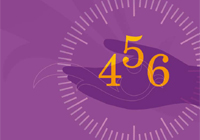
The Global Campaign for the Health MDGs: First year report 2008.
A group of global leaders met in New York on 26 September 2007 to launch the Global Campaign for the Health Millennium Development Goals (MDGs). The Campaign aims to give renewed impetus to Goals 4, 5 and 6 which focus on the urgent need to improve maternal, newborn and child health and to combat HIV/AIDS, malaria and other diseases.
To mark the first year of the Campaign, a progress report was released on 25 September. It provides an update of major activities during the last year, and highlights concrete actions that are required to accelerate the necessary progress if we are to reach the health related MDGs by 2015.
Read the contribution by Dr Peter Piot, Executive Director, UNAIDS:
Scaling up towards Universal Access: AIDS, Malaria, Tuberculosis and Immunization
AIDS is inextricably linked to the other MDGs: education, gender equality and poverty eradication are all vital for fighting it. And in many countries reducing HIV infections and deaths from AIDS is essential for making progress on other MDGs.
By the end of 2007, the global number of new HIV infections and AIDS-related deaths had begun to decline – largely the result of action on political commitments. At the G8 summits in 2005 and 2008, and at the UN High-Level Meeting on HIV/AIDS in 2006, leaders agreed to scale up to universal access to HIV prevention, treatment, care and support by 2010.
There are now 105 countries with national targets for universal access, and 147 countries submitted progress reports this year. In 2007, investment in HIV programmes reached US$10 billion, up from US$8.3 billion in 2005. Extraordinary efforts resulted in three million people in low- and middle-income countries receiving anti-retroviral treatment in 2007 – a million more than in 2006.
Several heavily affected countries are making progress on HIV prevention. There are falls in the number of people having more than one partner in the last year, increases in condom use among promiscuous young people, and, in sub-Saharan Africa, signs that people are beginning to have sex at a later age.
Access has improved to antiretroviral drugs that prevent mother-to-child transmission (PMTCT) of HIV. In low- and middle-income countries, a third of women who need the drugs can get them – up from 14% in 2005. Some countries, including Argentina, Botswana, Georgia and the Russian Federation, have achieved close to universal access, with PMTCT services at more than 75% coverage. In Botswana, just 4% of children born to HIV-positive mothers are infected.
Other prevention efforts are also improving. Of 39 countries reporting on it, coverage of HIV-prevention services for sex workers is 60%. For people who inject drugs coverage is nearly 50% in 15 countries, and for men who have sex with other men it is 40% in 27 countries.
In many countries AIDS programmes are supporting fragile health systems, improving service delivery, staff, information systems, governance and the procurement and management of drugs. We recommend using a third of HIV/AIDS resources to strengthen health systems.
There is more to do. In low- and middle-income countries, two-thirds of people requiring antiretroviral drugs cannot get them. For every two people starting HIV treatment, five become infected. AIDS remains the biggest killer of African adults (25-49) and is among the top ten killers worldwide. Like climate change, AIDS will require a long-term response. We need to build on progress and strengthen links with other health programmes, notably tuberculosis, sexual and reproductive health, and maternal and child health.
This will require more money: over 50% more by 2010 to maintain the current pace of growth in prevention and treatment. The price is worth paying.
Peter Piot
Executive Director
UNAIDS
The Global Campaign for the Health MDGs
Feature stories:
Gaps remain in delivering on global commitments (10 September 2008)
External links:
United Nations web site on the Millennium Development Goals
The Global Campaign for the Health MDGs
Publications:
The Global Campaign for the Health MDGs: First year report 2008
Related

Feature Story
Achieving the MDGs: Why the AIDS response counts
24 September 2008
24 September 2008 24 September 2008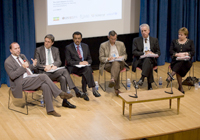
(from left) Dr. Peter Piot, Executive Director
of UNAIDS; Julian Lob-Levyt, Executive
Secretary of the Global Alliance for Vaccines
and Immunization (GAVI); Dr. Tedros
Adhanom, Minister of Health, Ethiopia;
Andrew Jack, Financial Times Pharmaceuticals
Correspondent; Michel Kazatchkine,
Executive Director of the Global Fund;
Ann Veneman, Executive Director of
UNICEF participate in MDG HLM side
event on MDG 6 equity challenge.
23 September, UNHQ, New York.
Credit: UNAIDS/Brad Hamilton
In 2000, global leaders embraced a series of Millennium Development Goals (MDGs) that resolved to make the world safer, healthier, and more equitable.
We are half-way to the 2015 target date and progress is mixed and uneven. To assess the gaps and understand what more needs to be done to ensure nations are on course to achieve the commitments they have made, a High-level Event on the MDGs takes place on 25 September 2008 hosted by the United Nations Secretary-General and the President of the General Assembly.
MDG 6 and universal access to HIV prevention, treatment, care and support by 2010
MDG 6 aims that by 2015 the world will have halted and begun to reverse the global HIV epidemic.
UN Member States have also committed, in a Political Declaration at the General Assembly in 2006, to taking extraordinary action to move towards universal access to HIV prevention, treatment, care and support by 2010. At this juncture it is useful to assess the HIV response.

Dr. Peter Piot, Executive Director of UNAIDS
speaks at MDG HLM side event on MDG
6 equity challenge. 23 September, UNHQ,
New York. (right) Julian Lob-Levyt, Executive
Secretary of the Global Alliance for Vaccines
and Immunization (GAVI)
Credit: UNAIDS/Brad Hamilton
Although Goal 6 specifically addresses the HIV epidemic, an effective HIV response will also support achievement of other Millennium Development Goals. Success in the achievement of the MDGs will also make an impact on HIV epidemics around the world. Addressing the obstacles to universal access to HIV prevention, treatment, care and support services will contribute to the achievement of the broader MDGs. These include addressing stigma and discrimination, human rights and gender inequality as well as ensuring sustainable financing, affordable commodities, strengthened health systems and human resources, and accountability.
| “Halting and reversing the spread of AIDS is not only a Goal in itself; it is a prerequisite for reaching almost all the others. How we fare in fighting AIDS will impact all our efforts to cut poverty and improve nutrition, reduce child mortality and improve maternal health, curb the spread of malaria and tuberculosis. Conversely, progress towards the other Goals is critical to progress on AIDS – from education to the empowerment of women and girls.” - United Nations Secretary-General Ban Ki-Moon speaking at the General Assembly High Level Meeting on HIV/AIDS, New York, June 2008 |
MDG 1: Eradicate extreme poverty and hunger.
There is a complex relationship between AIDS, poverty and human development, a so-called ‘vicious circle’ within which the impacts of AIDS increase poverty and social deprivation, while socio-economic inequalities increase vulnerability to HIV infection.
With the eradication of extreme poverty and hunger, people may reconsider lifestyle options which put them at higher risk of HIV such as working far away from home or in commercial sex.
Especially in high-prevalence settings, HIV deepens household poverty and slows economic growth. Alleviating the epidemic’s burden helps countries to grow their economies, reduce income inequalities, and prevent acute hunger. In Western Kenya, antiretroviral treatment has led to a large and significant increase in the labour supply. Within six months of starting treatment there is a 20% increase in the likelihood of participating in the labour force, and a 35% increase in weekly hours worked. This brings economic and other benefits to the family including for children’s nutritional status.
MDG 2: Achieve universal primary education.
The HIV response promotes universal education initiatives. Ensuring children’s access to school is an important aspect of HIV prevention, as higher levels of education are associated with safer sexual behaviours and delayed sexual debut and reduce girls’ vulnerability to HIV.
School attendance is a central focus of initiatives to address the needs of children orphaned or made vulnerable by HIV. Better access to treatment helps to minimize the epidemic’s impact on fragile educational systems; it also reduces the likelihood that young people will be withdrawn from school in response to HIV in the household.
MDG 3: Promote gender equality and empower women.
The effects of gender inequality leave women and girls more at risk of exposure to HIV so progress in this Goal is of fundamental importance to the HIV response.
Less access to education and economic opportunity results in women being more dependent on men in their relationships, and some who have no means of support must resort to bartering or selling sex to support themselves and their children. Where women cannot own property and lack legal protections, their dependence within their families is even greater.
The HIV response itself is also helping to drive efforts to reduce inequalities between the sexes. Countries are now monitored on the degree to which gender equity is a component of national HIV responses. Thus, the epidemic has increased the urgency of initiatives to forge new gender norms, and extensive worldwide efforts are under way to develop new HIV prevention methods that women may initiate. HIV has prompted parents, communities, and governments alike to approach the sexual and reproductive health needs of women, girls, and sexual minorities with renewed commitment.
MDG 4: Reduce child mortality.
Deaths due to AIDS among children is declining since 2003 as there is a drop in new infections and more children being put on treatment. However in most-affected countries such as Botswana and Zimbabwe, more than one third of all deaths in children under 5 are due to AIDS.
A key component of a comprehensive HIV response is the scaling up of prevention strategies that can nearly eliminate the risk of mother-to-child HIV transmission.
MDG 5: Improve maternal health.
Women now account for about half of all people living with HIV, and for more than 60% of infections in Africa. Greater access to antiretroviral medicines is improving the health and well-being of women, and pre-natal programmes for preventing mother-to-child transmission help mothers remain in good health to care for their children.
Integration of HIV initiatives with programmes addressing sexual and reproductive health is helping to ensure that women have access to the information and services they need to make informed reproductive decisions.
MDG 6: Combat HIV/AIDS, malaria, and other diseases.
Progress in TB control will greatly benefit the AIDS response as TB, which is mostly curable and preventable, is one of the most important causes of illness and death among people living with HIV.
A strong HIV response yields health benefits that extend well beyond HIV itself. The push to expand access to HIV treatment in resource-limited settings is helping to strengthen fragile health infrastructures and is driving improvements in human capacity in low- and middle-income countries.
MDG 8: Develop a global partnership for development.
Perhaps more than any other issue in our time, HIV has highlighted global and economic inequities, and has galvanized action on international development. HIV has helped place people at the centre of development.
Progress on inclusive, country-owned development strategies will deliver greater success for improved aid effectiveness, strengthened health systems and the AIDS response.
The AIDS response has championed more inclusive partnerships as being key and has pioneered the principle of country ownership through the 'three ones'.
High-level Event on the MDGs: Side events
UNAIDS Secretariat, its cosponsors and partners will host the following side events in relation to MDG 6:
The MDG 6 equity challenge
Organized by the Mission of Ethiopia, UNAIDS, Global Fund to Fight AIDS, TB and Malaria, and the Global Alliance for Vaccines and Immunization (GAVI). The meeting will focus on achieving MDG 6 by increasing access to basic health services, especially the delivery of new health technologies to geographically and socially marginalized communities.
UN system coherence to achieve MDG 6
Organized by the Missions of Ireland and Tanzania, UNAIDS, and UN Development Operations Coordination Office. The meeting will highlight coordination mechanisms to promote and enhance system wide support of national priorities to achieve MDG 6.
Achieving the MDGs: Why the AIDS response counts
Feature stories:
Gaps remain in delivering on global commitments (10 September 2008)
External links:
United Nations web site on the Millennium Development Goals
Publications:
2008 Report on the global AIDS epidemic
Delivering on the Global Partnership for Achieving the Millennium Development Goals - MDG Gap Task Force Report 2008

